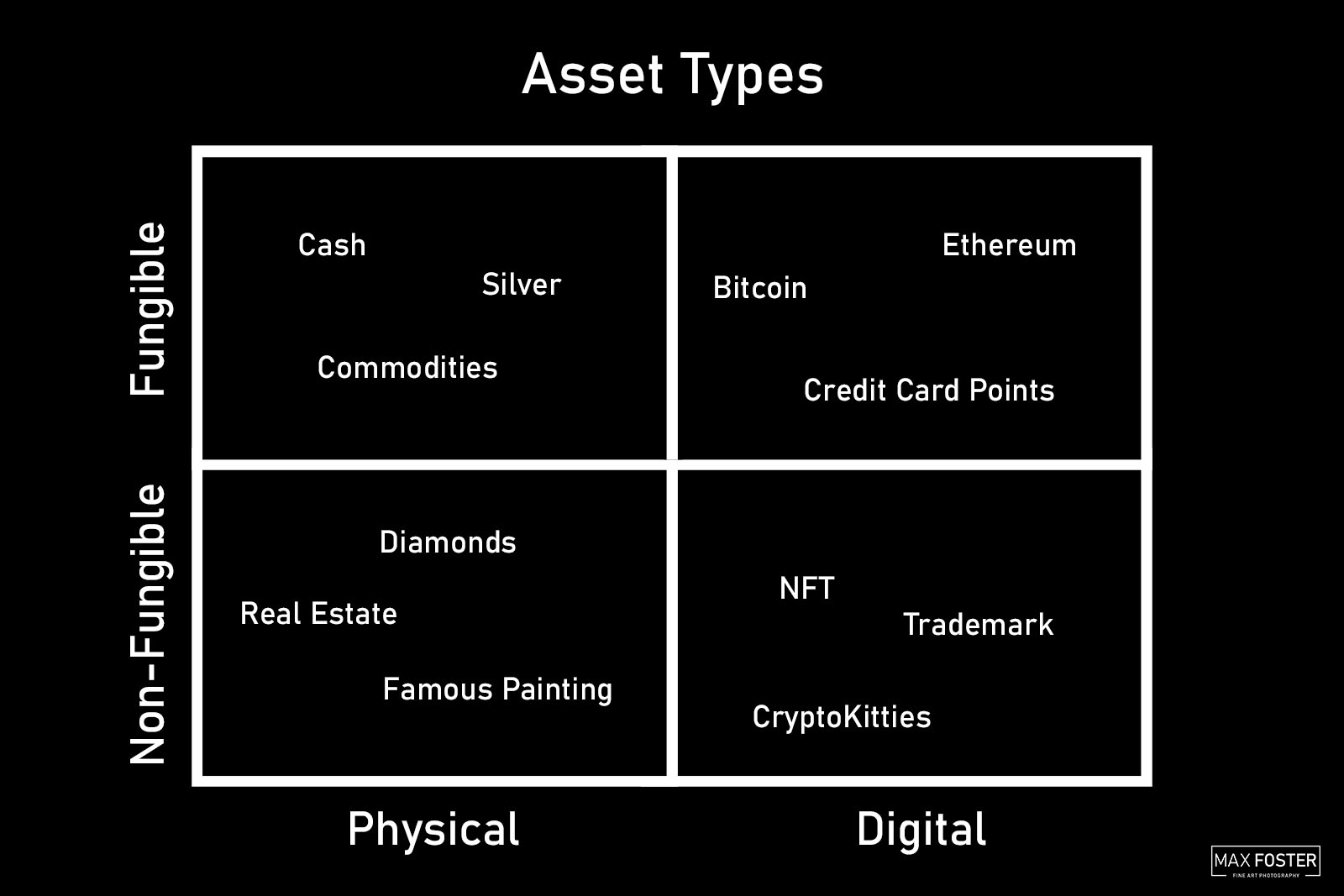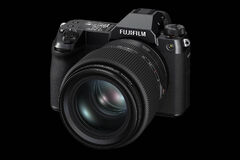What are NFTs and Can Photographers Really Benefit From Them?
An NFT is a Non-Fungible Token. The token refers to a digital token or certificate that is stored on a secure distributed database referred to as the blockchain. NFTs are therefore unique digital assets that can be bought and sold, with every transaction being permanently recorded in the blockchain. One way to think about NFTs is that they are like a certificate of authenticity that is permanently embedded into a database, along with any future transactions that transfer ownership. You can see who minted the NFT, who bought it and so on, in perpetuity. NFTs are a new technology, and we are only seeing a small portion of their likely future potential.
You may have heard of blockchain before, as it is the underlying concept behind decentralized cryptocurrencies like Bitcoin and Ethereum. Not all blockchains currently support NFTs, as this is an evolving technology and each blockchain has different structures. Ethereum is the most widely used blockchain service for NFTs, but this may change over time. NFTs can be used to represent both tangible and intangible items, but the current news has centered on how they have been used to sell purely digital / intangible items such as gifs and other digital artwork. Non-fungible refers to the lack of interchangeability of tokens; each one is purely unique. This differs from fungible assets that can be interchangeable with others of equal value, such as cash.

Why are so many people talking about NFTs?
Although NFT’s have been around for years now, the technology surged to incredible popularity in 2021. Christie’s offered its very first NFT auction sale featuring Beeple’s “Everydays: The First 5,000 Days” image for a record-breaking $69.3 million USD. Since this technology is not yet mainstream, many people are asking: “What is an NFT?” and “Can I sell my artwork as an NFT?” With news headlines touting huge sales for gifs, tweets, music videos, songs and digital photos it is no wonder people are interested in learning more. This new avenue of selling is intriguing and offers unique benefits to artists like photographers and illustrators.
How do you create an NFT?
Although the technology sounds extraordinarily complex, creating an NFT is not that difficult. First, you need to select what blockchain you want to use to issue NFTs. Ethereum is the most popular choice as of 2021, so that may be a good place to start. Keep in mind, however, that blockchains use specific NFT standards. If you want to sell your NFT on a specific marketplace, you need to make sure that you mint it on a compatible NFT token standard. For example, ERC-721 is a smart contract standard and is hosted on Ethereum’s blockchain. Minting an NFT refers to the process of creating a non-fungible token on the blockchain for your specific asset.
There are several Ethereum based marketplaces that allow you to mint and list NFTs for sale. The most popular are OpenSea, Mintable and Rarible. Some marketplaces allow any user to create and sell NFTs, but others require you to go through an application process that may or may not be approved. Once you select a marketplace, you need to link a compatible crypto wallet. For Ethereum NFT token standards, Coinbase and Trust Wallet are two popular choices. The registration process for these sites is unlike most other websites. Rather than simply entering an email and username, you will be required to link a crypto wallet to prove your identity.
Once you link your wallet, you can edit your profile and mint your first NFT. Some platforms require a fee to mint an NFT, but others like OpenSea do not. The process of minting an NFT is straightforward for most digital art. After uploading your art, you will be able to specify other properties that impact the NFT’s properties such as scarcity (how many editions) and uniqueness (additional content, etc). These factors will depend on your goals and impact the marketability on the platform. After creating your NFT, you can list it for sale. This requires additional input in which you specify the price, any future royalties and which token type you want to receive when an item is purchased. One of the coolest features with NFTs is the embedded commission or royalty fee. This allows the original creator to benefit from future sales of the NFT and is set by you. After completing this step, you can list your item on the marketplace. Alternatively, as a buyer you can browse marketplaces for NFTs to purchase, just make sure you have a compatible wallet to complete the transactions.
Popular Marketplaces to Purchase NFTs
What do you receive when you buy an NFT?
Essentially, you are buying the ownership of a digital good. This may be a single edition, one of many editions, part of a collection, etc. You do not purchase the copyright to the image in most cases, which means the NFT creator can still do what they please with their digital asset. Additionally, it does not grant exclusive access to the digital asset. This means that there may be a million copies of the same gif or photo on the internet for all to see, but only one unique NFT that shows ownership of the asset. This aspect of NFTs is hard to comprehend from a traditional asset ownership perspective, but it shows a changing trend in value for digital consumers. One analogous example is that of sports trading cards. There may be 1,000 copies of a player’s rookie card, but only one has that player’s signature on it. That card is worth far more than the others, as it is the only signed copy.
How can NFT technology benefit photographers and other digital artists?
The traditional market for photography and other digital art has been limited to stock photography licensing, print making, and other avenues of selling tangible copies or intangible rights to a work of art. With huge market saturation in the last decade, it is increasingly difficult for most artists to generate revenue for their work. NFTs represent an entirely new market and mindset for artists. Buyers interested in art and technology are now clamoring to not only support their favorite artists, but also to acquire scarce digital assets that offer the potential for appreciation. NFTs are a boon to artists and buyers alike due to the unique structure of blockchain technology. Each transaction is recorded for all to see and cannot be undone, erased or misplaced. Additionally, artists can benefit from the secondary market by including a commission in their NFTs that will pay them on any subsequent sales of their NFT. Perhaps most importantly, artists can retain their full copyright unlike many licensing agreements. This is a revolutionary feature for photographers and artists today.
Are there concerns related to NFT technology and digital artists?
All new technology presents growing pains. One of the most unusual aspects to NFTs is that anyone can mint them. For photographers and digital artists, this can be problematic and there is no legal precedent to guide buyers and sellers at this time. For example, if someone downloads an image they do not own the copyright to, they are still able to mint an NFT with that image. The original copyright owner would rightfully have an issue with someone profiting off their work without permission, but it is unclear what recourse they would have at this time. With sales increasing on marketplaces every day, this could be a serious issue for not only artists, but the marketplaces themselves. Who is liable? Who gets damages in the event of copyright infringement? What constitutes copyright infringement? These are all unanswered legal questions that anyone interested in buying and selling NFTs need to consider.
Another threat to NFTs relates to the inherent carbon footprint of blockchain and crypto technology. These technologies require significant computing power which translates into huge power consumption. For the eco-conscience, this is a major concern.
One additional untested aspect of NFTs relates to securities and tax law. Governments will likely regulate NFTs similarly to other securities. This may require buyers to pay sales tax on transactions, and to pay gains tax if they sell an NFT that has appreciated in value. This is all new ground, but it will undoubtedly come up in years ahead. Governments always want a piece of the action.
Finally, each marketplace has its own vulnerabilities. There have been reports of NFT collections “disappearing” from marketplaces with no notice. If this occurs after paying minting fees or buying NFTs it could be a significant problem. There are many other potential concerns with NFTs, but these are some of the major factors for photographers and artists currently. For more legal information regarding NFTs, click here.
Should you buy or sell NFTs?
This is a complicated question that will depend entirely on your desire to be at the forefront of new technology. Although there are obvious benefits to artists minting and selling NFTs, there are also significant concerns to be cognizant of. If you decide to venture into the world of NFTs, be sure to apply your own risk to reward analysis and proceed with caution. NFTs are here to stay, but it is yet unclear how they will evolve over time.



